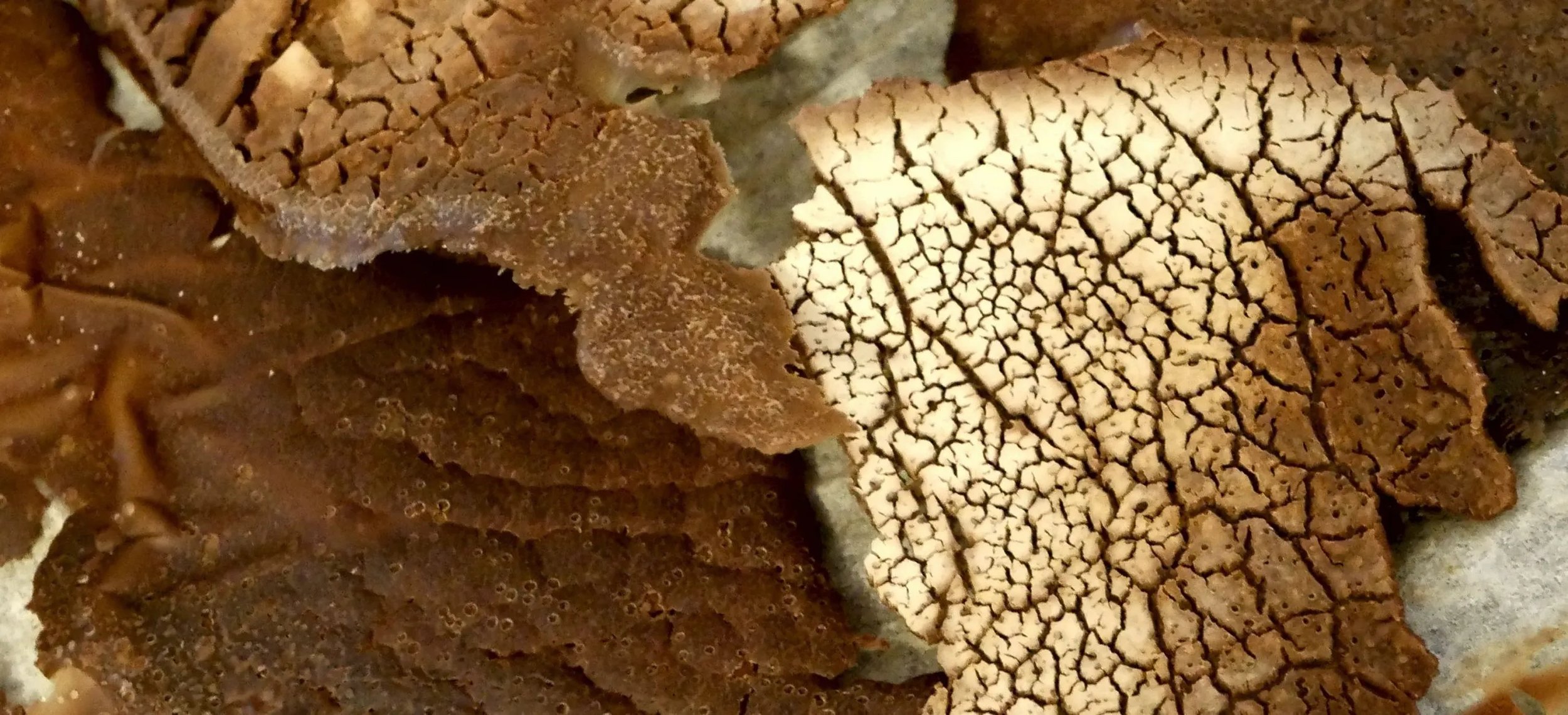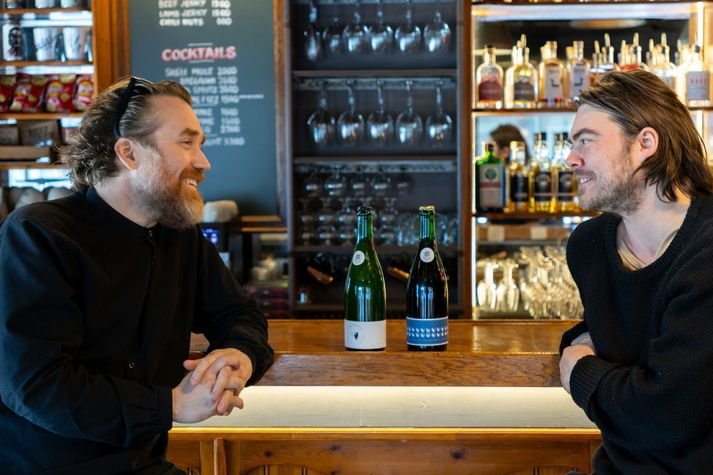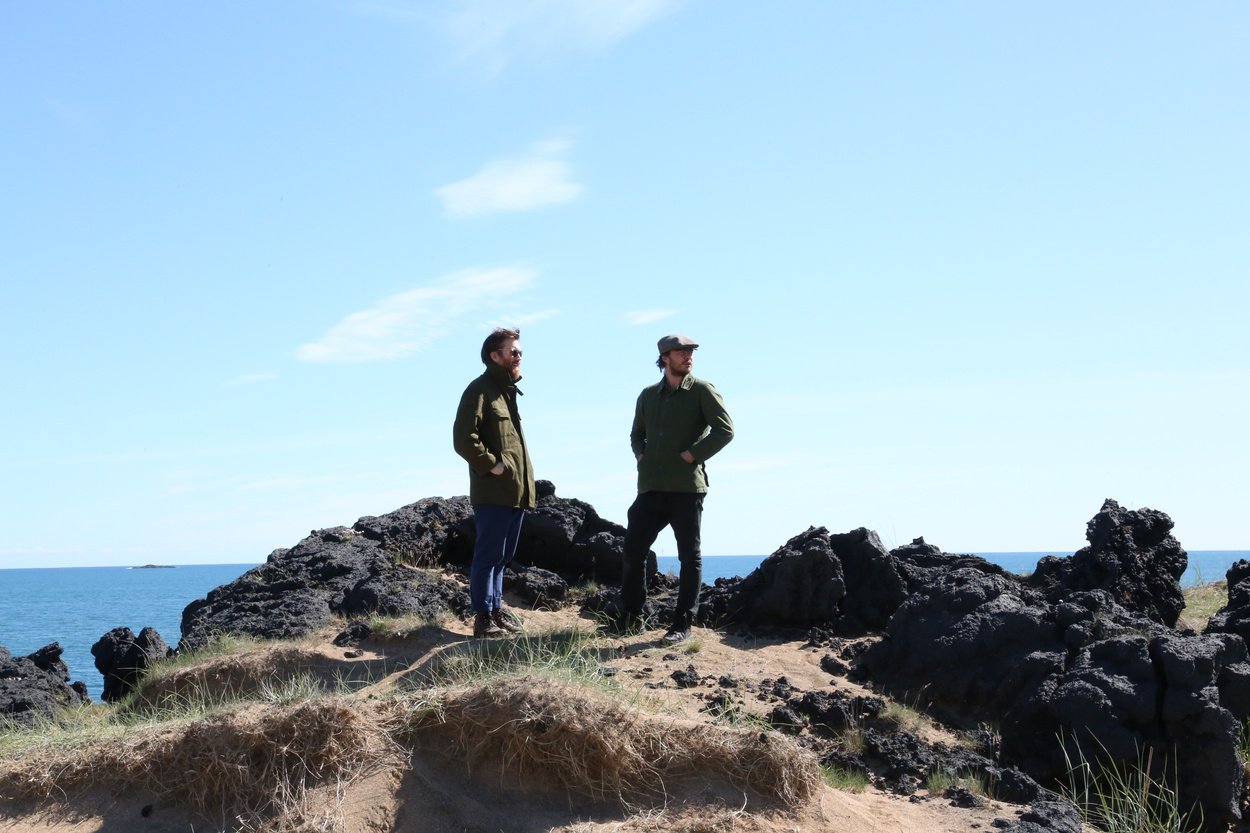
Bjarnarhöfn: a unique history in fermentation.
At Bjarnarhöfn, time slows down, and history lingers in the air—along with the unmistakable scent of hákarl. This centuries-old Icelandic delicacy, made from fermented Greenland shark, is not for the faint of heart. The process is both ancient and fascinating: first buried to ferment, then hung to dry for months in the salty North Atlantic air. What emerges is a bold, ammonia-rich bite that tells the story of Viking survival and Icelandic ingenuity. Whether you love it or just endure it, hákarl is a taste of Iceland’s wild past—and at Bjarnarhöfn’s Shark Museum, you can see (and smell) the tradition firsthand.

Eldfell: Where Fire, Fermentation, and Flavor Collide.
Eldfell: Where Fire, Fermentation, and Flavor Collide
In 1973, the eruption of Eldfell transformed Heimaey, reshaping the island’s landscape and history. Decades later, life has returned to the lava fields, mirroring the wild, natural fermentation process we embrace at Grugg & Makk. Just as native plants and microbes thrive in volcanic soil, our wild ales capture Iceland’s unique terroir through native yeasts and bacteria. Whether hiking Eldfell, visiting Brothers Brewery, or experiencing the Goslok Festival, Heimaey offers a taste of resilience, nature, and craft—one that lives on in every sip.

Thoughts from the lab: Symbiotic intelligence
At Grugg & Makk, we often find ourselves reflecting on the unseen forces at work in our brewhouse — the microbes. It's easy to imagine that these tiny organisms exist merely to serve us, helping create bread, beer, and kombucha. But what if the opposite is true? What if we are part of their grand design — multicellular vessels crafted to gather, nurture, and spread microbial life?
When we brew our wild ales, we’re not just fermenting — we’re collaborating with an entire ecosystem of yeast and bacteria. These microbes communicate, compete, and build their own microbial cities, shaping the world around them in ways that mirror our own. It’s a humbling reminder that intelligence takes many forms — some too small for the eye to see.


Exploring Norwegian Kveik Yeast: A Unique Strain with a Rich History
Exploring Norwegian Kveik Yeast: A Unique Strain with a Rich History
At Grugg & Makk, we are fascinated by the distinct flavors that come from wild fermentation, especially through the use of unique microbial cultures. One such culture is Norwegian Kveik yeast, a traditional strain that has been passed down through generations in rural Norway. Kveik yeast is valued for its ability to ferment efficiently at higher temperatures, making it perfect for the cooler, fluctuating climates of Norway.
The yeast has several remarkable traits: it ferments quickly—often in just 24 to 48 hours—allowing brewers to speed up production without compromising flavor. Known for imparting fruity, citrusy flavors like orange, pineapple, and mango, Kveik also adds subtle spice, honey, and herbal notes, creating a balanced and aromatic beer.
Kveik has experienced a resurgence in modern craft brewing, with brewers experimenting with different strains to produce unique, one-of-a-kind beers. At Grugg & Makk, we draw inspiration from this tradition and appreciate the fascinating qualities of Kveik yeast, which connects the past with the future of brewing.

Wild Ale Wednesdays AT LITLI BARINN
Discover the unique flavors of Iceland with Grugg & Makk. Our tasting experience takes you on a sensory journey through local landscapes, showcasing the rich aromas and textures of our brews while exploring the history of beer in Iceland and our innovative brewing process.

The Difference Between Belgian Lambic Beer and Wild Ale
Lambic beers are a specific type of wild ale, brewed exclusively in the Pajottenland region of Belgium. Their unique character comes from spontaneous fermentation, where the wort is exposed to wild yeast and bacteria in the air, imparting distinct sour and funky flavors. In contrast, wild ales encompass a broader category, brewed worldwide using various wild or cultured yeast strains. While Lambics follow strict traditional methods, wild ales offer creative flexibility, reflecting the flora and innovation of their regions.



